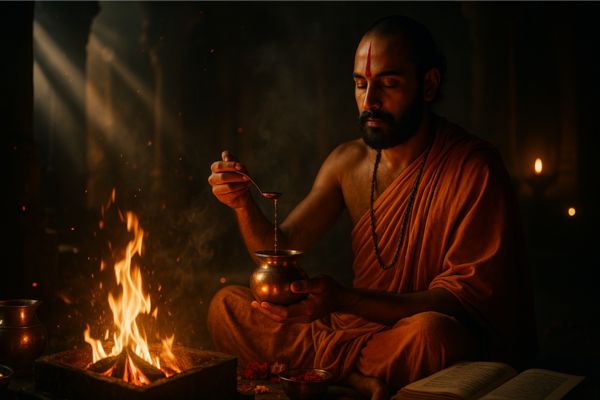
In Hindu dharma, Sankalpa is a sacred vow or solemn declaration made before commencing any ritual, ceremony, or spiritual practice. Derived from the Sanskrit words 'San' (meaning 'good' or 'auspicious') and 'Kalpa' (meaning 'intention' or 'determination'), Sankalpa embodies the resolve to perform an act with sincerity and devotion.
Before initiating a puja, yagya, or sadhana, practitioners articulate their Sankalpa to align their mind and heart with the divine purpose of the ritual. This declaration serves as a bridge between the individual's inner intention and the cosmic order, ensuring that the act is performed with clarity, focus, and spiritual alignment.
In this article, we will explore the profound significance of Sankalpa in Hindu rituals, its origins, the correct method of taking Sankalpa, and its transformative power in both traditional ceremonies and personal spiritual practices.
Meaning of Sankalpa

Derived from Sanskrit – “San” (good) + “Kalpa” (resolve or intention)
In Sanskrit, the term Sankalpa is a compound of two words:
San:
Often interpreted as 'good,' 'auspicious,' or 'a connection with the highest truth.'
Kalpa
: Meaning 'vow,' 'resolve,' or 'intention’.
Thus, Sankalpa translates to a solemn vow or heartfelt intention made with sincerity and determination. It signifies a commitment to align one's actions with their highest truth and purpose.
Why It’s the Foundation of Puja, Yagya, and Daily Sadhana

In Hindu rituals and spiritual practices, Sankalpa serves as the foundation upon which the entire ceremony is built. Before commencing any Puja (worship), Yagya (sacrificial ritual), or Sadhana (spiritual practice), the practitioner articulates their Sankalpa to:
- Declare the purpose of the ritual.
- Invoke divine witness to their intention.
- Align the mind and heart with the spiritual objective.
This practice ensures that the ritual is performed with clarity, focus, and spiritual alignment, transforming it from a mere routine into a meaningful act of devotion.
Importance of Sankalpa in Hindu Rituals
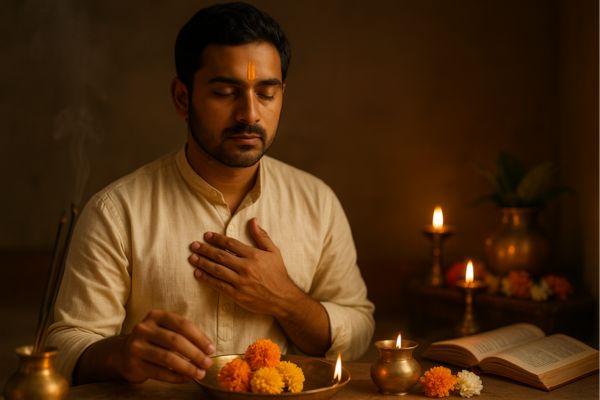
In Hindu dharma, taking a vow (Sankalpa) is not a formality. It is a sacred declaration of will, faith, and commitment. It marks the beginning of any karmic act that is consciously aligned with dharma and directed toward the divine. A Sankalpa is the moment when an ordinary act becomes a spiritual offering.
A Bridge Between Devotee and Deity

Sankalpa transforms a ritual into an intentional act of surrender. By expressing a clear resolve, the devotee steps into the role of a Yajamana, the spiritual initiator. Whether one is performing a puja, fasting, chanting, or participating in a yajna, taking Sankalpa means one is inviting divine energy to witness and bless their action.
The Hindu Ethos of Vow-Taking

From the Mahabharata to the Puranas, Hindu scriptures are replete with stories where great beings took Sankalpa and fulfilled them:
- Bhishma's terrible vow of lifelong celibacy shaped the entire Kuru lineage.
- Hanuman’s vow to find Sita Mata was fulfilled with absolute devotion and strength.
- Even the gods, like Lord Vishnu, take divine vows to protect dharma when needed.
- This reflects a deep spiritual truth: the strength of one’s Sankalpa has the power to move both heaven and earth.
Sankalpa Anchors the Mind and Soul
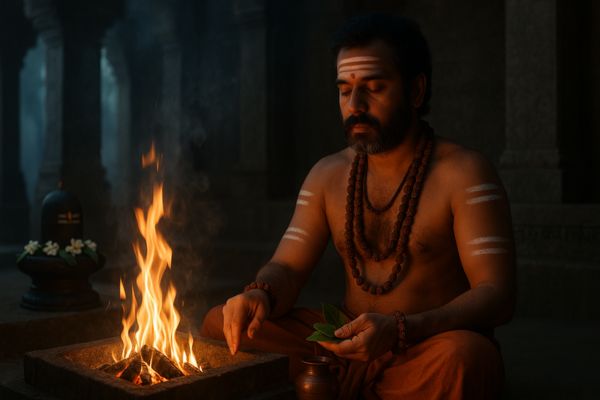
Without intention, even the most sacred rituals become mechanical. Sankalpa anchors the wandering mind, helps the devotee cultivate focus (ekagrata), and sets the tone for the entire spiritual effort. It is a soul-level agreement that 'I am offering this act with faith, for a specific spiritual purpose.'
In fact, according to the Shrauta Sutras and Agama Shastra, no puja, homa, or vrata is considered complete without a properly taken Sankalpa.
When and How Is Sankalpa Taken?
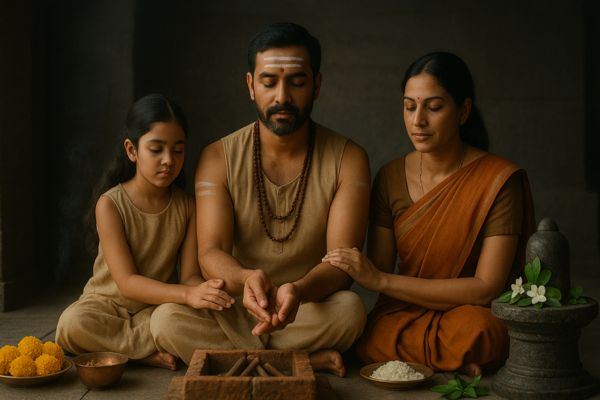
In Hindu rituals, Sankalpa is always taken at the very beginning of the ceremony, before the chanting of mantras, offering of flowers, or lighting of the lamp. It serves as the opening gateway to the puja or spiritual practice, invoking divine attention and aligning the devotee's intention with sacred energies.
When Is Sankalpa Taken?

- Before Pujas (daily, festival, or special)
- Before Homam or Yagya
- Before Vratas or Fasts
- At the beginning of major life ceremonies (marriage, Upanayanam, Grihapravesh, etc.)
- At the start of any Sanketik (symbolic) or personal Sadhana
- Even before meditation or mantra chanting for heightened focus
- Taking a Sankalpa ensures that whatever you are about to do is sanctified, centred, and spiritually charged.
How Is Sankalpa Taken?
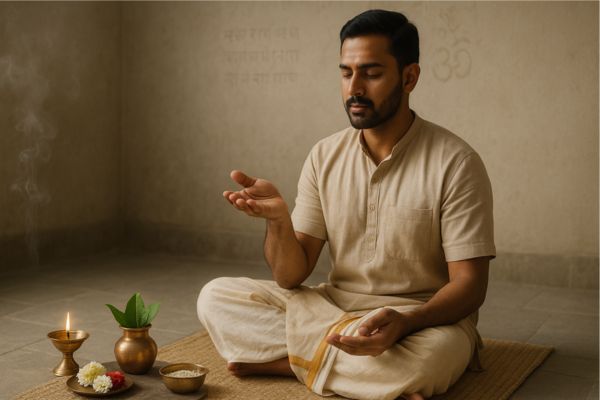
Sankalpa is usually spoken aloud or mentally stated, often in Sanskrit, while holding water (jal) in the right palm, which is later offered to the earth (Prithvi) to seal the intent. Here's the general process:
- Sit facing East or North in a calm, clean space.
- Invoke Ganesha and your Ishta Devata.
- Take water in your right palm (symbolizing your intention).
-
Recite your Sankalpa, which usually includes:
- Name, Gotra, and place
- Tithi (date and time)
- The purpose of the ritual (puja, vrat, yagya, etc.)
- Specific wish or resolution (if any)
- Release the water onto the earth, symbolizing that your intent has been submitted to the divine.
This practice is both symbolic and vibrational, it is believed that by stating your resolve clearly and with devotion, you align yourself with cosmic forces that help manifest it.
Typical Structure of a Sankalpa

A Sankalpa is a structured declaration made at the beginning of a Hindu ritual, serving as a formal statement of intent. It aligns the devotee's actions with cosmic order and ensures the ritual's sanctity. The structure of a Sankalpa typically includes the following components:
- Invocation of the Deity
The Sankalpa often begins by invoking the deity under whose auspices the ritual is performed.
Example : “Om Vishnuh Vishnuh Vishnuh, Sri Govinda Govinda Govinda!”
- Cosmic Time Reference
This section situates the ritual within the vast framework of cosmic time, referencing the current age of Brahma, the present Kalpa (aeon), and the Manvantara (era of a Manu).
Example :“Adya Brahmanah, Dvitīya Parārdhe, Śveta Vārāha Kalpe, Vaivasvata Manvantare.
- Current Time and Date
Here, the specific details of the current time are stated, including the lunar month, fortnight (Paksha), Tithi (lunar day), weekday, Nakshatra (lunar mansion), and other astrological details.
Example :“Asmin Vartamāne Vyavahārike, Chandramāne Māse, [Month Name] Māse, [Paksha] Pakṣe, [Tithi] Tithau, [Vāsara] Vāsare, [Nakṣatra] Nakṣatre...”
- Geographical Location
This part specifies the geographical location of the ritual, from the continent down to the specific place.
Example :“Jambūdvīpe, Bhārata Varshe, Bhārata Khande, [Your City/Town Name] Nāgarī...”
- Personal Details
The devotee states their name and lineage (Gotra), identifying themselves as the performer of the ritual.
Example :“Mama Nāma [Your Name], [Gotra] Gotrah...”
- Purpose of the Ritual
This section declares the specific intention or purpose of the ritual, such as seeking blessings, fulfilling a vow, or attaining spiritual goals.
Example :“Mama Upātta Samasta Duritakṣaya Dvāra Śrī Parameśvara Prītyartham...”
- Description of the Ritual
Finally, the devotee states the specific ritual or practice they intend to perform.
Example :“Śrī [Deity Name] Pūjām Karishye”
Each component of the Sankalpa serves to precisely define the context and purpose of the ritual, ensuring that it is performed with clarity and devotion.
Sankalpa in Meditation and Yoga

While Sankalpa plays a formal role in Hindu rituals and Vedic ceremonies, it also holds deep relevance in personal spiritual practices such as meditation, yoga, and daily sadhana. In these inner disciplines, Sankalpa becomes not just a declaration, but a seed of transformation.
Sankalpa in Yogic Philosophy

In yogic tradition, Sankalpa is a powerful resolve made from the heart, not the mind. It is not a casual wish or desire, it is a deep, soul-level intention that aligns with one’s dharma (higher purpose).
During practices like Yoga Nidra, practitioners are encouraged to plant a Sankalpa in a relaxed yet alert state of consciousness. It is said that a Sankalpa taken in such a state has the power to reprogram the subconscious mind, clear inner resistance, and guide the practitioner toward self-realization.
How It Differs from a Goal or Resolution

Unlike new year resolutions, which often come from fleeting emotions or mental ambitions, a true Sankalpa arises from clarity and stillness. It is:
- Short and positive (e.g., “I am whole,” “I am fearless”)
- Repeated with faith and conviction
- Held during meditative states or daily rituals
- The idea is to let the Sankalpa sink deep into your consciousness, influencing your thoughts, emotions, and actions over time.
Daily Sadhana with Sankalpa
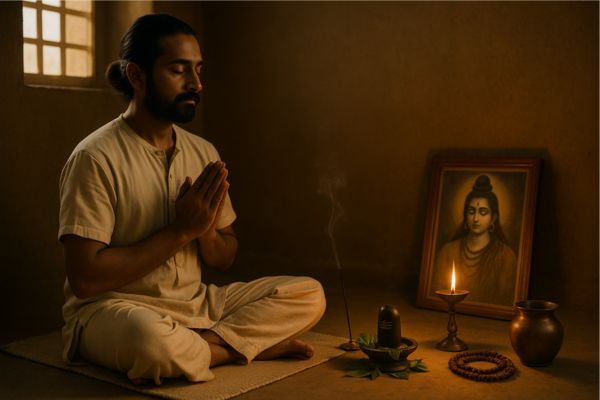
Spiritual seekers often begin their daily puja, japa, or dhyana with a short personal Sankalpa. For example:
“May this practice purify my mind.”
“I dedicate this sadhana for the wellbeing of my family.”
“I offer this act to Lord Shiva in devotion.”
This creates intentionality, turning even simple actions into steps on the path of liberation.
The Spiritual Power of a Sankalpa
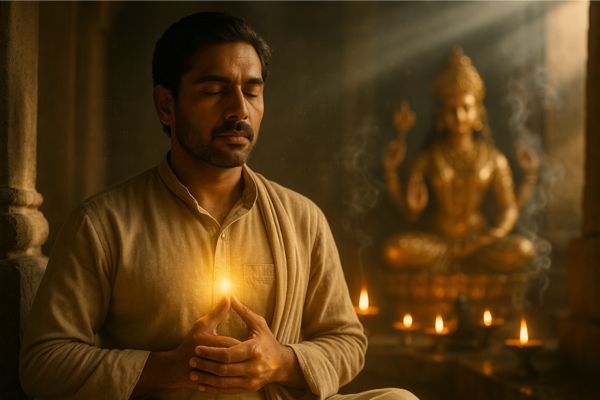
In Hinduism, Sankalpa is a sacred force. When taken with pure bhaav (devotion), it becomes a binding spiritual vow, infused with divine energy. The very act of mentally resolving to perform something spiritual, be it a vrat, a puja, a japa, or a selfless act, invokes the grace of the Ishta Devata and strengthens the spiritual will.
Sankalpa as Divine Witnessing
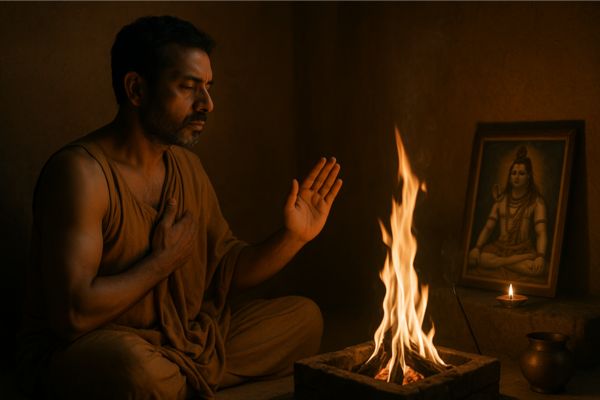
By stating one’s Sankalpa aloud before a deity or in front of Agni (sacred fire), the practitioner essentially invites the devas to witness and bless their resolve. This act places the responsibility not just on the individual, but on the cosmic intelligence to co-create the intended outcome. In this way, Sankalpa becomes a spiritual contract between the self and the divine.
The Power of Dharma-Driven Resolve
The Mahabharata and Ramayana are filled with Sankalpas that shaped history. Lord Rama’s vow to protect the sages, Bhishma’s terrifying Sankalpa of celibacy, and Arjuna’s determination to follow Krishna’s guidance, all show how a dharmic resolve has the power to bend fate itself.
As it is said in the Shastras:
“Sankalpa shuddhau karma shuddhih”
When the intention is pure, the action becomes pure.
Internal and External Alignment

A true Sankalpa aligns your thoughts, words, and deeds, creating harmony between your inner world and outer actions. This alignment is what the Vedas refer to as ṛta, cosmic order. A Sankalpa that emerges from this state creates transformation not just in external results, but also in spiritual evolution.
Manifestation Through Faith

Ultimately, Sankalpa is about shraddha, faith. When a devotee believes deeply in their intention and surrenders the outcome, miracles happen. This is why even the simplest Sankalpa, when taken with honesty and purity, carries immense power.
Experience Guided Sankalpa with Rudra Centre Puja Services
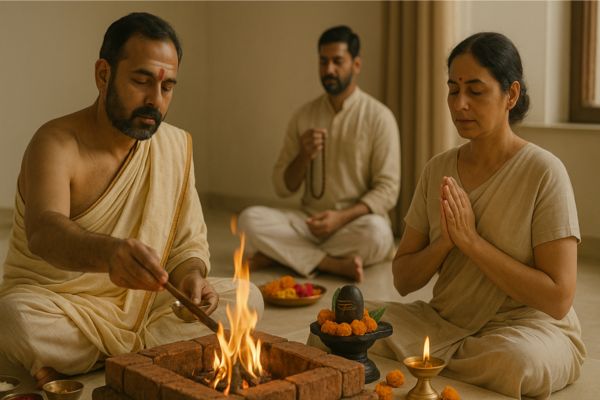
At Rudra Centre, our expert priests help you take a clear and powerful Sankalpa as part of every puja and havan. Your name, Gotra, intention, and wishes are woven into authentic Vedic rituals performed with devotion and scriptural accuracy. Whether you seek health, peace, prosperity, or spiritual upliftment, our Sankalpa-based pujas ensure your personal intentions are honoured and offered to the Divine in the most auspicious way.
Click on the link to explore Rudra Centre’s personalized online puja services and experience the blessings of a heartfelt Sankalpa.



-in-Astrology.jpg)

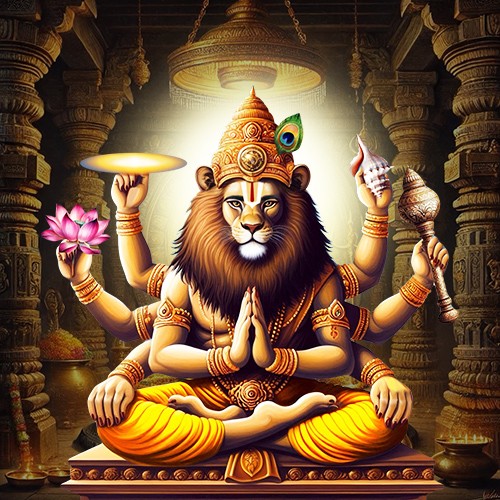
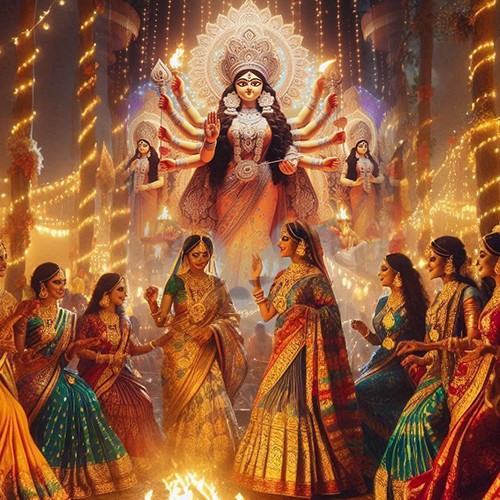


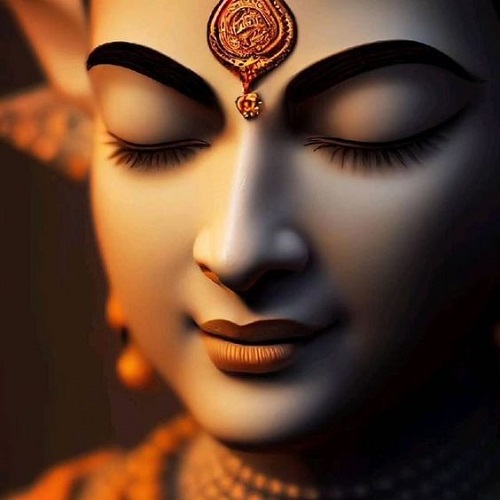
.jpg)


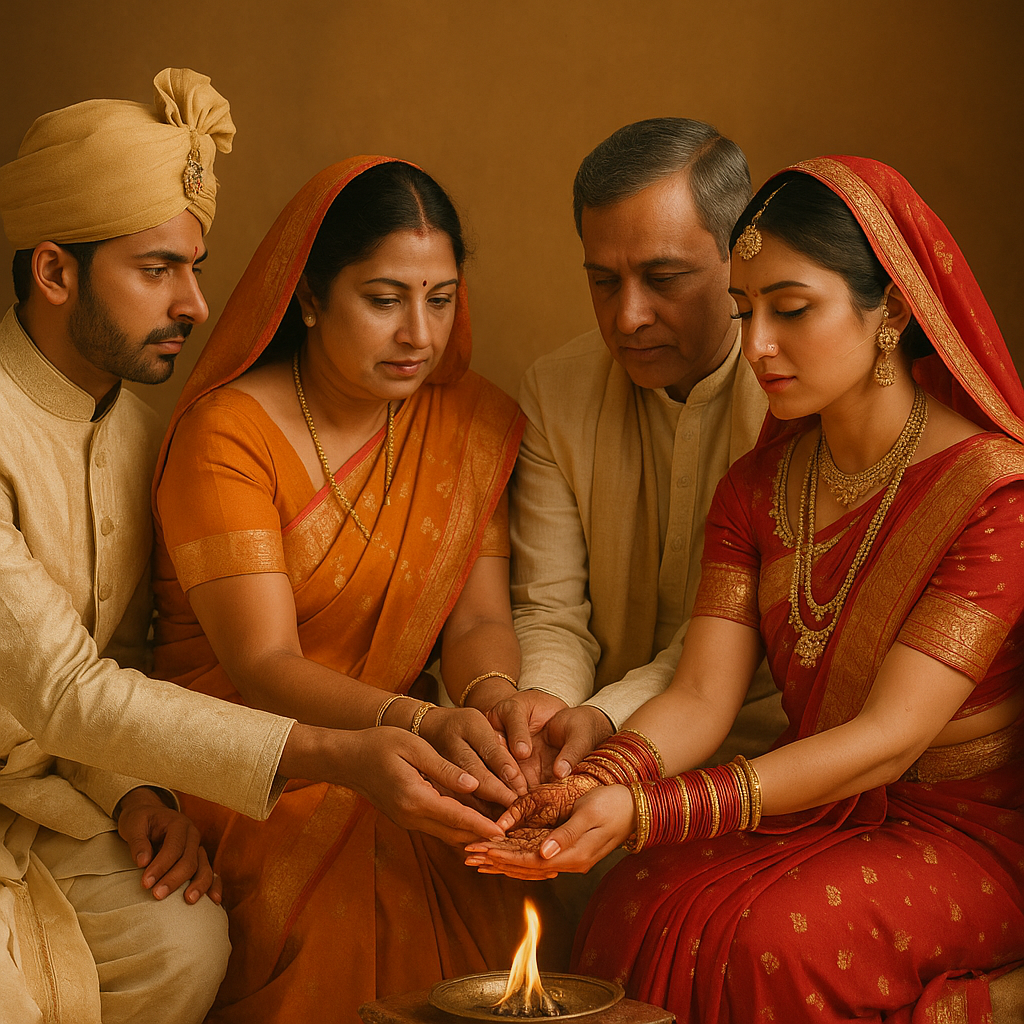
Comments 0
Leave your thought here